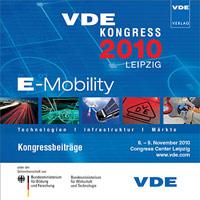Scalability - An approach for simulation and optimization of vehicular electric drives
Konferenz: VDE-Kongress 2010 - E-Mobility: Technologien - Infrastruktur - Märkte
08.11.2010 - 09.11.2010 in Leipzig, Deutschland
Tagungsband: VDE-Kongress 2010
Seiten: 6Sprache: EnglischTyp: PDF
Persönliche VDE-Mitglieder erhalten auf diesen Artikel 10% Rabatt
Autoren:
Buecherl, Dominik; Herzog, Hans-Georg (Technische Universität München, Institute of Energy Conversion Technology, Munich, Germany)
Inhalt:
There is a lot of experience developing electric and hybrid electric drive trains so far. But engineers are still looking for a uniform procedure for preliminary component design. For such a procedure, developers need powerful simulation tools supporting them in understanding the interdependent influences of drive train component dimensioning and control. Scalability in drive train simulation together with optimization is an extensive approach to address this current engineering challenge. Therefore, the goal of the presented work is to derive scalable models for steady-state simulations of electrical machines, frequency inverters and energy storages for vehicular applications and use them for optimization. The scalable modeling of the electric drive is realized by a geometric scaling. Based on a designed reference machine the operating range can be enlarged or diminished. The machine simulation is facilitated by equivalent circuit models for asynchronous induction machines with squirrel cage rotor and for permanent magnet synchronous machines. The inverter model is automatically adapted to the machine scaling. The inverter’s loss behavior depends on the particular operating point and is modeled by analytic equations. The scaling of the energy storage components is realized by a variation of the cell number in parallel and serial connection. Lithium-ion battery technologies as well as double-layer capacitors and hybrid energy storage systems are considered. The operating point dependent losses are modeled by dint of equivalent circuits. The scalable models are combined realizing an entire electric drive train simulation. A control strategy is derived and parameterized. The usability of the scalable models for optimization procedures is shown. The selection of an adequate optimization algorithm is presented and the algorithm is integrated in the simulation tool. Finaly, the optimization procedure is used for several vehicular electric drive train configurations.


